Browse using the new Vinous website now. Launch →
Printed by, and for the sole use of . All rights reserved © 2015 Vinous Media
Washington State on a Roll: The Suave 2022s and Seductive 2023s
BY ERIC GUIDO | OCTOBER 23, 2025
Article Additions: December 18, 2025 - Andrew Will Winery, Dossier, Reynvaan Family Vineyards
Nothing makes me happier than returning from a wine region with good news, and that is precisely what Washington State’s later-release 2022s and earlier-release 2023s have provided. First and foremost, I am pleased to say that I underestimated the 2022 vintage when I tasted through the wines last year. It was a season full of potential, but much of what I tasted in 2024 didn’t thrill me. My opinion has changed, as many of the more prominent wines now display a fantastic mix of complexity, power and structure. As for 2023, the vintage's brightness, energy and depth are wildly exciting. There’s a lot to love about both years, and the future appears to be very bright for 2024 and 2025.
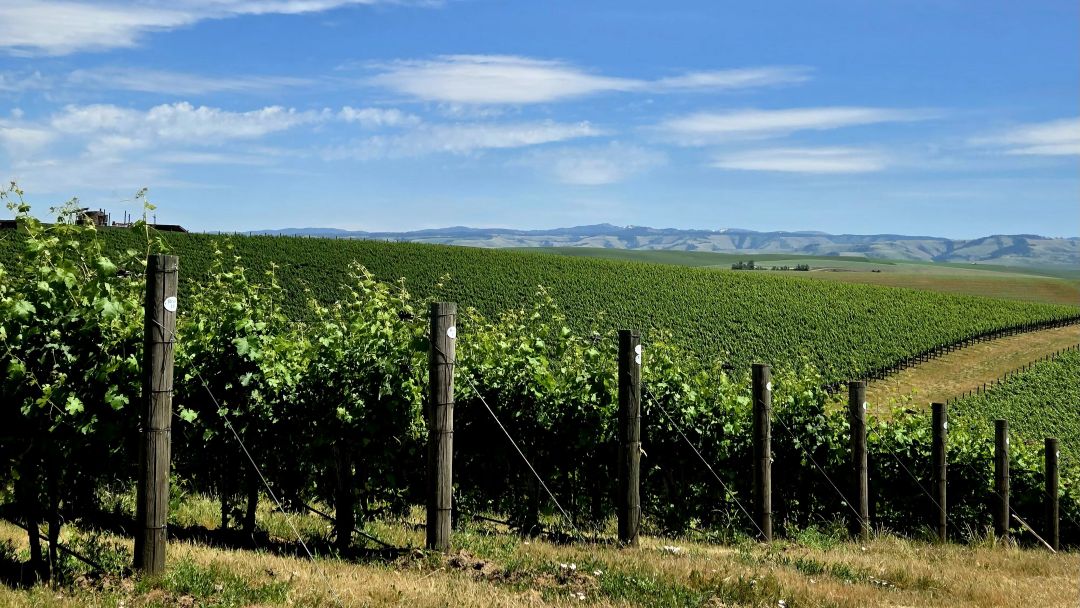
The Tranche vineyards in the Walla Walla Valley AVA, with the Blue Mountains in backdrop.
I’ve described the region, climate and terroir at length in the past, and I encourage readers to check out my recent articles for a deep dive into the world of Washington Wine: Washington State 2021 and 2020: From the Frying Pan to the Fire and Rhônes on the Rise: Washington State Takes the Lead. For now, there are more pressing things to discuss.
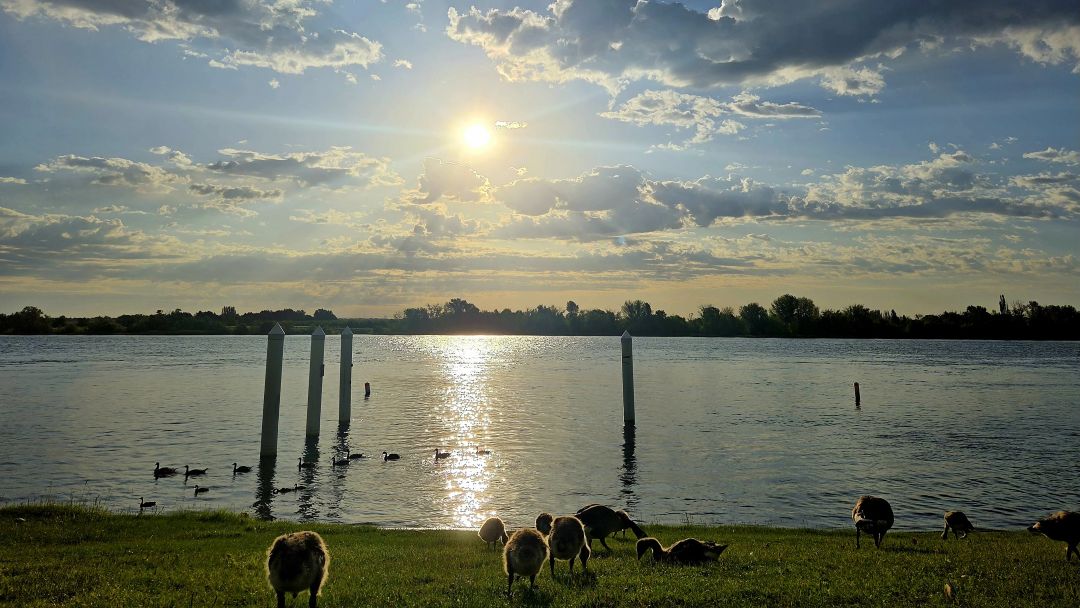
The Columbia River helps to supply water throughout Washington State.
Revisiting the 2022 Vintage
During last year’s tastings through Washington State’s 2022s, I was perplexed by many of the wines in front of me. I expected more. The cold and wet start to the 2022 season enlarged canopies, berries and clusters. It also caused uneven fruit-set and prolonged flowering. Veraison took place weeks later than usual. Though July and August brought warmer temperatures, many vineyard managers wondered if the fruit would achieve physiological ripeness before the freeze that usually comes every fall and forces the end of harvest. Luckily, an Indian summer saved the season, allowing winemakers to wait well into October to begin picking. Everyone rushed to harvest at the same time which, combined with large yields, overloaded the system, creating a scarcity of labor, a lack of bins to fill and a shortage of available fermentation vats. The season was abundant, the harvest was rushed in many cases and winery space was at a premium.
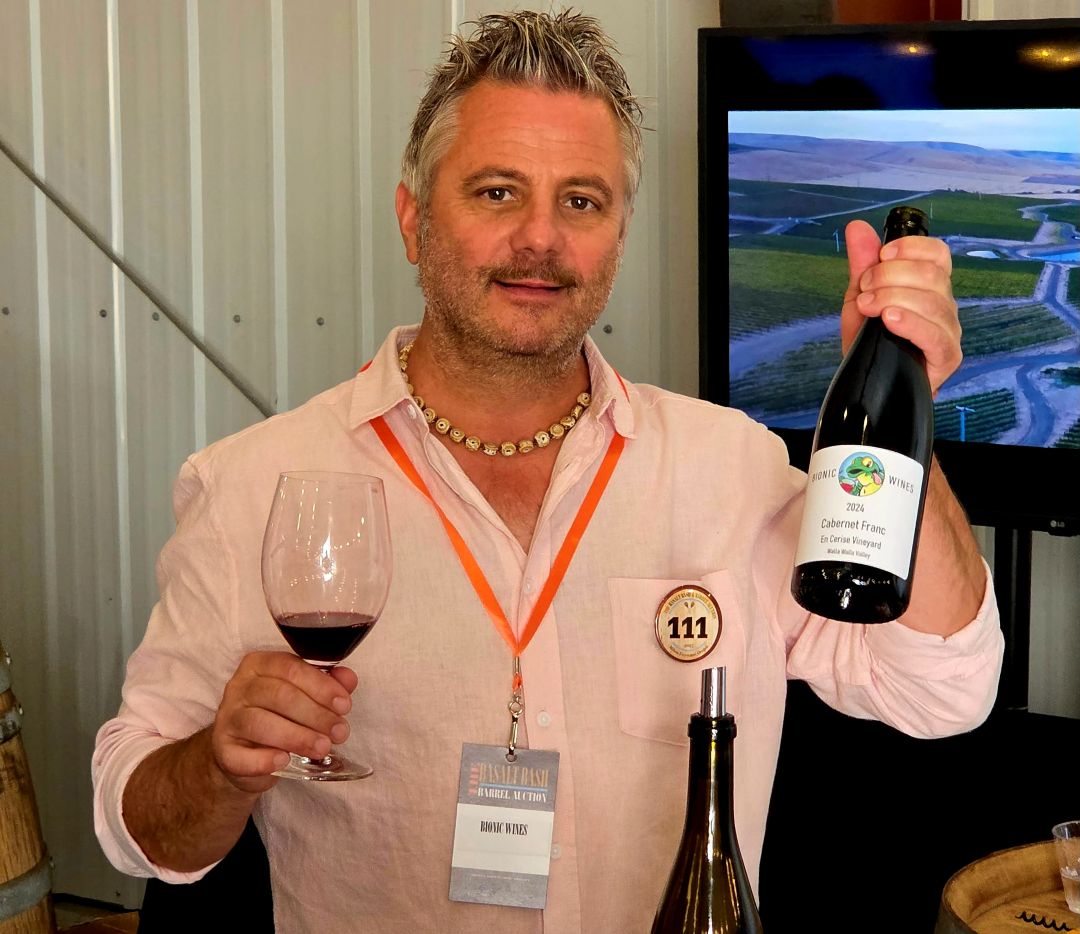
A pioneer in the region, Christophe Baron of Bionic Wines proved skeptics wrong by excelling with Rhône varieties in what is now The Rocks District of Milton-Freewater.
Challenges aside, a cool vintage was welcome in a region where recently, each season has been warmer than the last. I was excited by 2022’s potential, but my first tastings revealed much inconsistency. Having now tasted another 350 wines from 2022, I maintain that it is a producer-dependent year. The winemakers and vineyard managers who succeeded were those that sacrificed yields and took the time to manicure their canopies and vines. Winemakers who had grown accustomed to warm-vintage fruit over the course of a decade suddenly had to bend their brains around new styles of fermentation and barrel-aging regimens. Ultimately, many producers put in the effort to understand how to make the best wine possible. Though the 2022s underwhelmed me in 2024, their current performance overwhelms me in 2025, as reflected in my notes.
The Idyllic 2023 Vintage
The only thing more difficult than reviewing a challenging vintage is reviewing one where there’s little challenge to speak of. That’s exactly what I faced while tasting Washington’s 2023s. Obviously, it’s not difficult to taste the wines. In fact, tasting the majority of these wines was a pure pleasure. They are bright and energetic with crisp fruit profiles, stunning aromatics and an acidic spine that propels them across the palate, hemmed in by beautifully formed tannins. However, the difficulty is getting winemakers and vineyard managers to detail how the wines actually came to be. I heard refrains like, “It was a perfect season,” “There was nothing in particular to speak of,” and “It was a relaxing harvest,” over and over again. If the wines hadn’t been as good as they were, I might have thought the whole thing was an organized cover-up for a poor season. Thankfully, that is not the case.
The 2023s excel through balance, ample structure and overall approachability. Wines from throughout the region that are typically stern and youthfully monolithic possess a surprising level of dimension and verve in 2023. That said, those same wines usually mature beautifully and blossom over time, so it will be interesting to follow the 2023s’ trajectories. It’s difficult to compare 2023 to any other vintage. The wines seem to have the vibrant fruit of 2021 and the balanced structure of 2018, but that energy—I just haven’t seen it before.
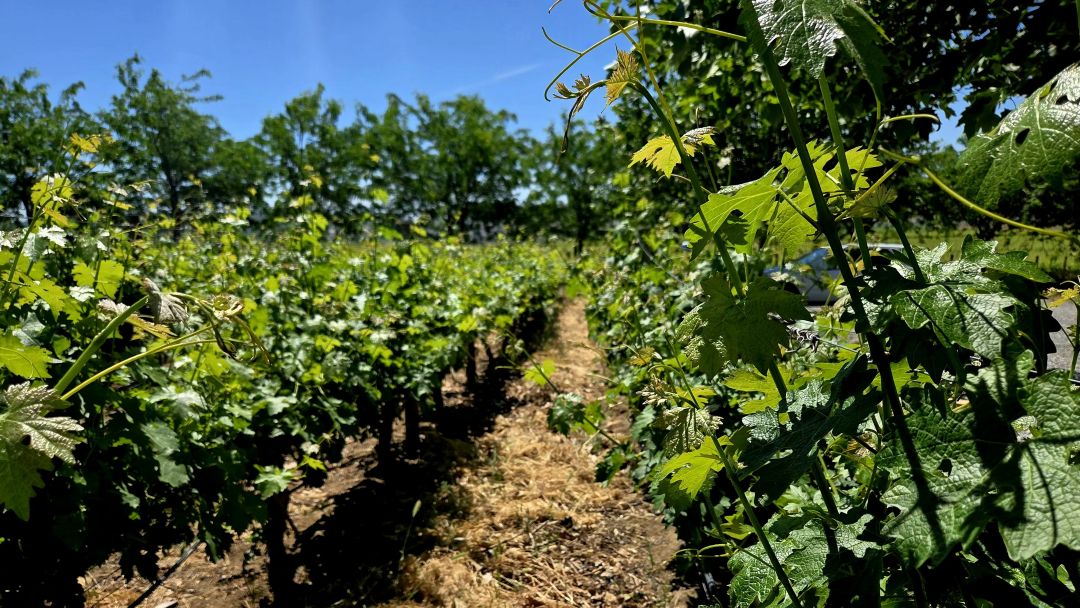
The biodynamic vineyards of Domaine Magdalena in the Red Mountain AVA.
After a cool and wet winter, the 2023 season started with a warm spring that led to an early budbreak. Heat continued through the summer months, coupled with dry conditions that pushed ripeness ahead. Vineyard managers in Washington are well-equipped for these conditions, but even so, it seemed as if 2023 would be another excessively hot vintage. However, conditions improved near the end of August, with unexpected cool weather and light precipitation slowing down the ripening process and allowing the vines to find balance. This cool period is the reason for the vibrant acidity present in the 2023s. Ideal conditions and significant diurnal shifts remained through the autumn, allowing producers all the time they needed to make harvest decisions based on proper physiological ripeness, especially tannin ripeness.
The 2023 vintage allowed Washington State winemakers to show what they can accomplish when they’re not constantly battling Mother Nature. The wines maintain a profile that many would expect from a cool vintage, yet with the inherent power of the region. Red Mountain stands out as a notable example. These wines typically display aggressive tannic structures that require serious aging or winemaking wizardry to balance. However, the 2023s are serene and harmonious. The Syrahs take on deeper floral characteristics, perfumed yet complex. Many of the wines are already surprisingly drinkable but also built for the cellar. That may be 2023's only fault. Many wine lovers may devour their stashes long before the wines reach full maturity.
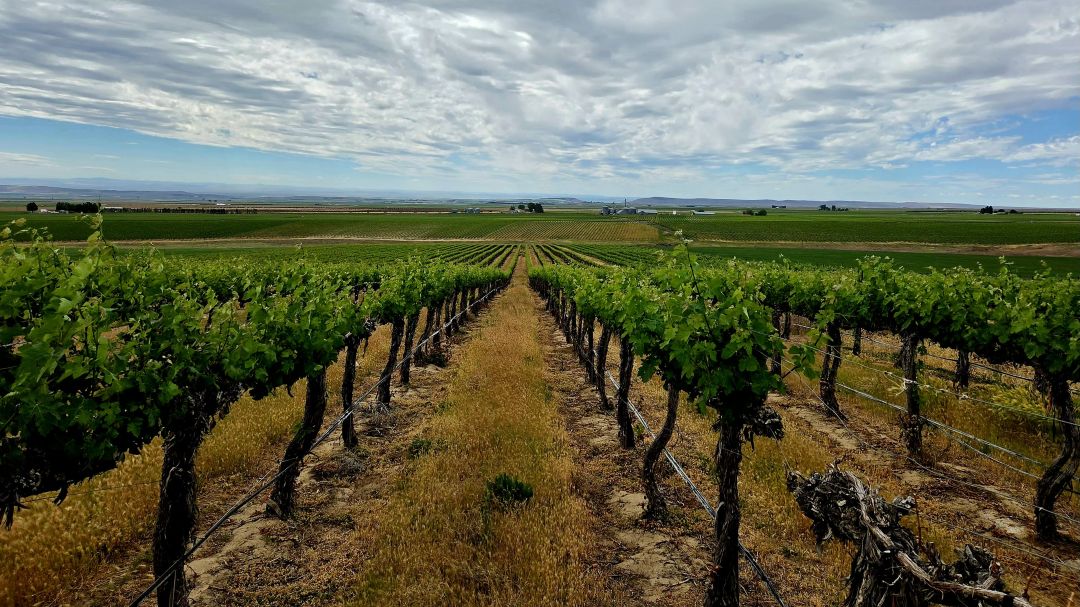
The Andrews Family Vineyard in the Horse Heaven Hills AVA.
When There’s Blood in the Streets…
Washington State winemakers and growers have suffered significant losses amidst the current economic climate. The number one fear producers express to me in my tastings and visits across the world is that younger generations simply aren’t drinking wine. Even well-established producers with a solid foundation of loyal collectors have felt the pangs of recent trends as new mailing list signups slow. Proprietor Charles Smith of House of Smith explained that he has decided to shrink his massive portfolio and reorganize his brands to streamline messaging to consumers. He’s intently focused on offering good value while upholding the highest quality standards. Additionally, Duckhorn has decided to phase out the Canvasback brand and sell the associated vineyards.
This brings up a salient point: Whereas Washington State used the consistent growth of licensed wineries as a marketing tool in the past, those licenses have shrunk over the last two years. In 2023, the Washington State Wine Commission reported over 1,050 wineries. Today, that number is around 1,000. Most winemakers admit that the industry grew too quickly over the last decade—there were just under 650 licenses in 2015. The combination of a tariff war with Canada that continues to ban American wines from entering their country, a younger generation that seems more interested in microbreweries and CBD gummies than wine, and an industry that got too big too fast has created a perfect storm economically.
To make matters worse, the massive changes at Ste. Michelle Wine Estates have had a drastic impact on growers. For decades, Ste. Michelle was the largest buyer of grapes in the state. That changed quickly following Sycamore Partners' acquisition of Ste. Michelle in October 2021. Since then, the brand has closed tasting rooms, laid off staff and reduced its purchasing by over 40%. Justin Andrews, of Andrew’s Family Vineyards in the Horse Heaven Hills AVA, explained that about 40% of their 4,000 acres of vines remain unclaimed. The family continues to farm and maintain the vineyards in hopes that things will change in the coming years. It's difficult to fully capture how much the changes at Ste. Michelle Wine have affected the landscape across Washington, since the majority of the state’s producers do not own estate vineyards, instead purchasing fruit from established vineyards.
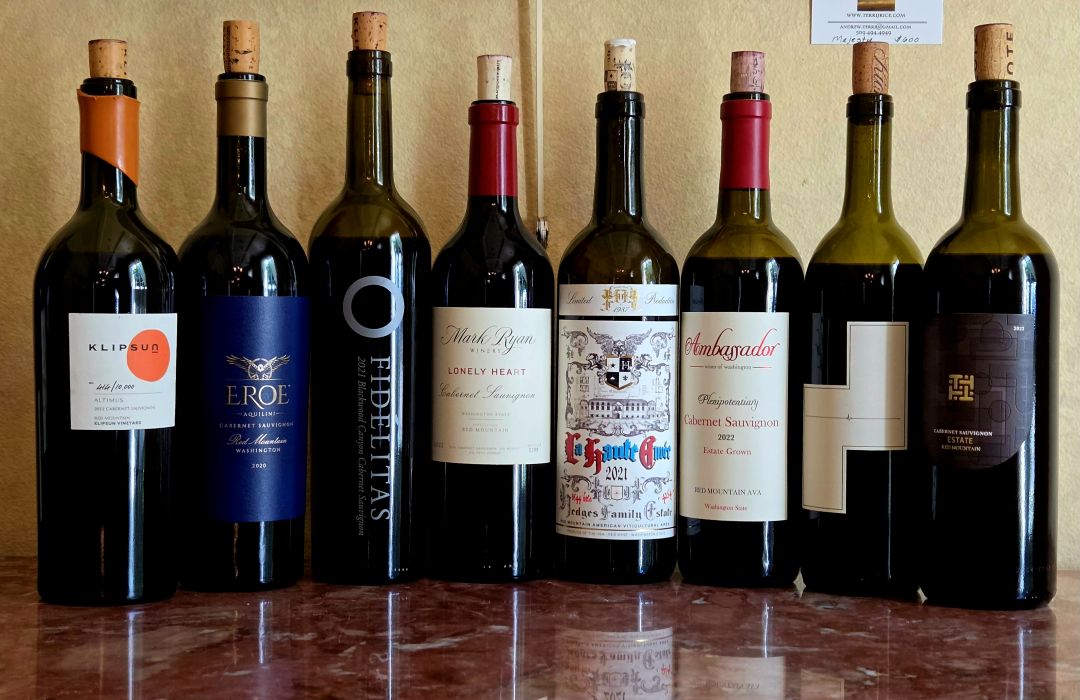
An assortment of Cabernet Sauvignons from across the Red Mountain AVA.
But there is a silver lining. As I mentioned, most winemakers agree that the rapid growth of Washington wine has saturated the market, and a correction is needed. The current situation is providing just that. Moreover, the rising quality of wine and a series of good-to-excellent vintages have established Washington as the United States’ top source for relative value. It is astounding how often I encounter a Washington wine that costs significantly less than I would assume. I’m not talking about mass-produced, manufactured “products” that we find on supermarket shelves or the endcap of a liquor store. I’m talking about artisanal, low- to medium-production wines that overdeliver in every possible way. These wines are often made with the goal of introducing consumers to a brand, using fruit that would have otherwise been reserved for prestige-level bottlings. The pricing on most Bordeaux blends and varietal Cabernet Sauvignons—where Washington truly excels—is far below that of other domestic regions.
And so I say, when there’s blood on the streets, buy property. I firmly believe that the issue of attracting younger wine lovers is just a phase. I do not doubt that a new wave of wine drinkers is waiting in the wings. For any winery that holds the line and roughs it through these challenging times, I expect there will be significant rewards. What’s more, Ste. Michelle Wine Estates' shrinking assets and staff reductions suddenly made choice vineyard sites with proper vine age available to other wineries, while simultaneously flooding the market with highly experienced, well-trained winemakers who quickly transitioned into new roles at other wineries. Marchesi Antinori purchased Ste. Michelle’s 50% stake in Col Solare in 2024, giving them complete control over the winery. Quilceda Creek purchased Duckhorn's 16.8-acre Long Winds Vineyard in Red Mountain, which may become another single-vineyard bottling in their portfolio. The list goes on and on.
Washington producers should keep their heads down, stay the course and fight the good fight. The story of Washington wine's renaissance has just begun.

Brother and sister team, Christophe Hedges and Sarah Hedges Goedhart of Hedges Winery.
Growth Investing: Trading Winemakers Like Baseball Players
One of the most interesting and unique aspects of reviewing Washington wine is tracking winemakers from vintage to vintage. This is serious business, as winemakers leave more of an imprint here than in most areas. That's not to say Washington State ignores terroir, but its terroir can be communicated in drastically different ways depending on who ferments, ages and blends the wines. If you love what a particular winemaker did at one brand, you certainly want to check out what they’re doing at the next. Here is a brief rundown of some of the key players and their movements over the last two years.
The most significant development over the last year was Todd Alexander’s exit from Washington State winemaking, which created a massive vacuum at several estates including Force Majeure, Cimento, WeatherEye Vineyards, From the Sky Down, The Walls and PÁŠXA. Most of these vacancies have been filled. After over a decade at Betz Family Winery, veteran winemaker Louis Skinner stepped into the open position at Force Majeure in March 2025. Skinner brought a European spin to the Betz portfolio back in the day, and I’m very excited to see what he’ll accomplish at Force Majeure—he blended the 2023s at both Force Majeure and WeatherEye Vineyards. Meanwhile, Ackley Brands purchased Betz Family Winery in 2024 and brought on Will Wiles (whose history includes Col Solare, Columbia Crest and Ste. Michelle) as Director of Winemaking. Wiles blended the 2023s in conjunction with Bob Betz. In another exciting trade, Brandon Moss joined Betz as Reserve Winemaker. Moss spent 16 years working directly with Greg Harrington at Gramercy Cellars. Sally Johnson Blum (previously of St. Francis Winery & Vineyards and Pride Mountain Vineyards in California) is now the consulting winemaker at The Walls and PÁŠXA, with Peter Urian as associate winemaker. Urian has been working with The Walls since 2016. David Wanek of The Walla Walla Land Company brought in Anthony Yount (of Denner in Paso Robles) to consult and blend the 2023 vintage at Cimento, a truly exciting project based in The Rocks District of Milton-Freewater.
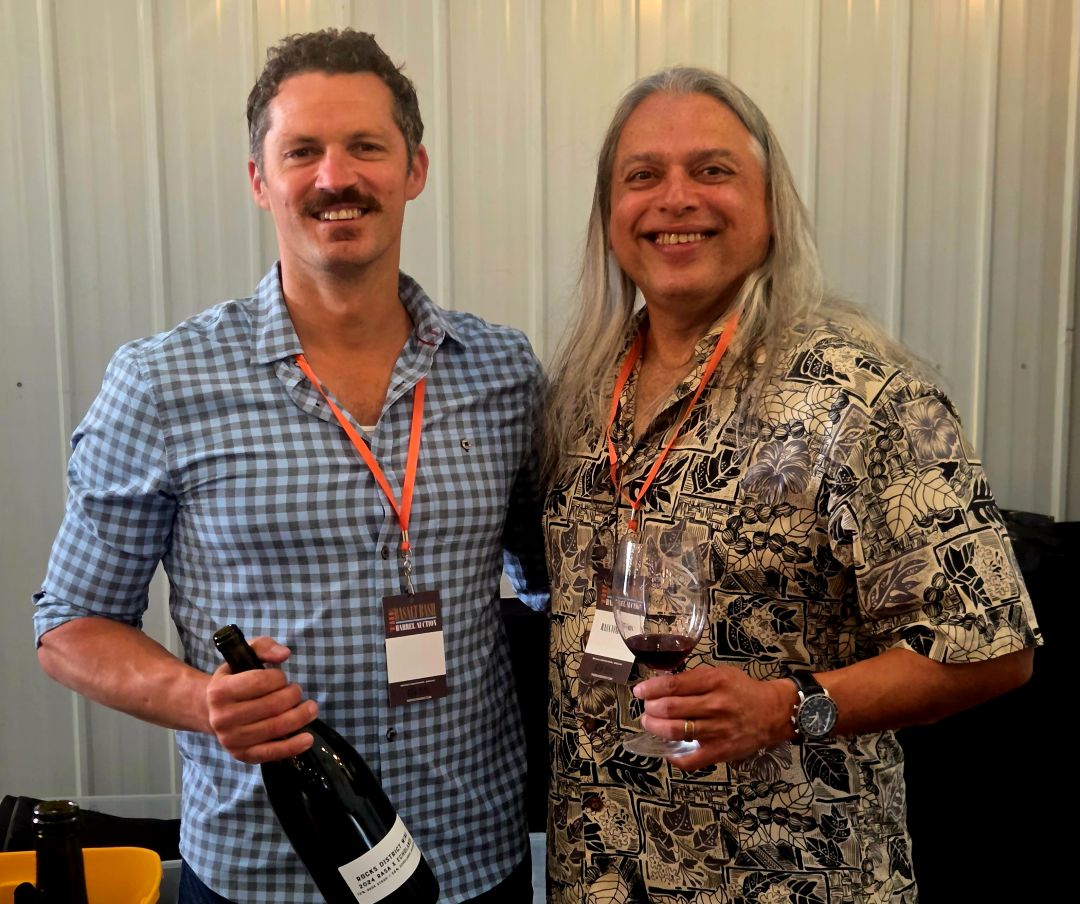
Brian Rudin of Echolands (left) and Billo Naravane, MW (right), collaborated for the Basalt Bash in The Rocks District of Milton-Freewater.
Other notable developments include Elizabeth Bourcier’s exit from scene. Her own brand, La Rata, concluded with the 2022 vintage, but she is perhaps best known for her work with Bionic Wines as their vigneronne. Bourcier’s purview included Cayuse, Horsepower, No Girls and Hors Catégorie. Stepping into her position is Karin Gasparotti, who served as Bourcier's assistant vigneronne since 2021 after working at Northstar Winery and Ste. Michelle.
Then there’s Echolands, made famous by Doug Frost MW, MS. After Canvasback closed, Brian Rudin became general manager and head winemaker in 2023. This, coupled with a massive new winery in the foothills of the Blue Mountains and estate vineyards planted around it, bodes well for the brand's future. Also in 2023, Brooke Robertson of Delmas took over full winemaking responsibilities from Billo Naravane, MW, one of Washington State’s best winemakers. Naravane continues to excel with his brand, Rasa, and consults and makes wines for several others. Robertson’s talents are already on display with Delmas’ recent vintages—it seems that a star is born. Last and certainly not least is Charles Smith of House of Smith, who is once again the head winemaker for his large portfolio. Brennon Leighton, former vice president of winemaking and vineyards at House of Smith, has shifted his focus to his own value-oriented brands under the umbrella of the B.happy Wine Company.
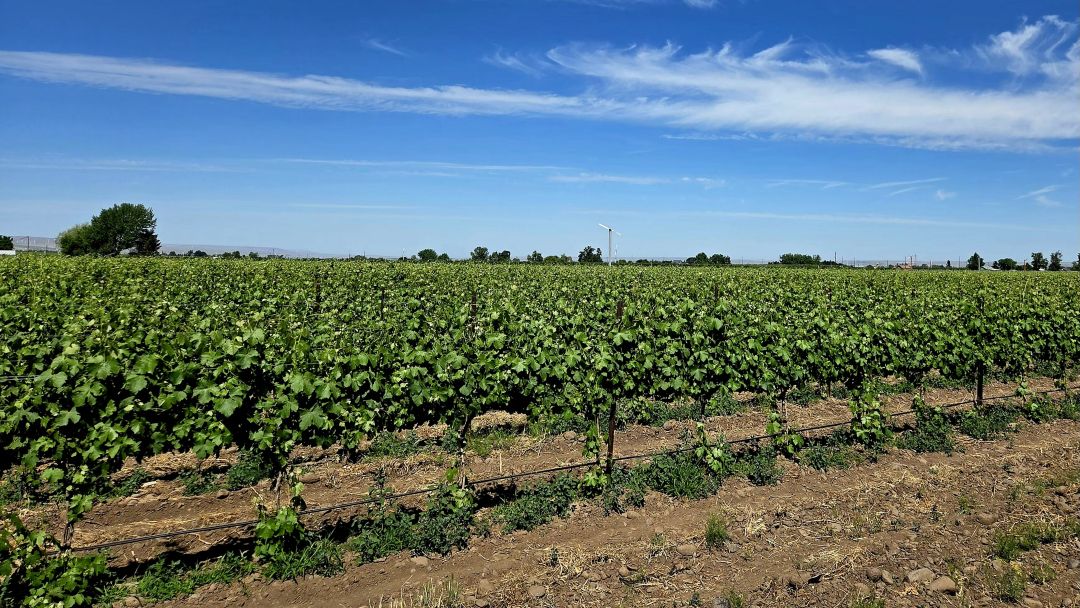
The San Tommaso Vineyard in The Rocks District of Milton-Freewater.
Washington is unlike any other region I cover. The value proposition is unparalleled. Winemakers are open-minded and happy to take on experiments and collaborations worldwide. Due to the diverse terroir, the region can excel with nearly any variety. And, in the end, despite economic turmoil, spirits remain lifted, and high-quality wine continues to flow.
I tasted the wines for this article in Washington State in June and October 2025.
© 2025, Vinous. No portion of this article may be copied, shared or redistributed without prior consent from Vinous. Doing so is not only a violation of our copyright but also threatens the survival of independent wine criticism.
You Might Also Enjoy
Better Late Than Never: The 2022 Vintage in Washington State, Eric Guido, December 2024
Washington State 2021 and 2020: From the Frying Pan to the Fire, Eric Guido, January 2024
Rhônes on the Rise: Washington State Takes the Lead, Eric Guido, August 2023
Against All Odds: Washington State’s 2020s and 2019s, Eric Guido, March 2023
Show all the wines (sorted by score)
- Abeja
- Airfield Estates
- Airfield - Lone Birch Wines
- Alleromb
- Amavi Cellars
- Ambassador Wines of Washington
- Andrew Januik Wines
- Andrew Will Winery
- Aquilini Wines
- Armstrong Family Winery
- Avennia
- Balboa Winery
- Bayernmoor Cellars
- Betz Family Winery
- Bledsoe Family Winery
- Bledsoe McDaniels
- Block Wines
- Block Wines - Starside
- Cadence
- CasaSmith
- Cayuse Vineyards
- Chateau Ste. Michelle
- Cimento
- City Limits
- Col Solare
- Contact Natural Wines
- Corliss Estate
- Covington Cellars
- DAMA Wines
- DarkRock
- DeLille Cellars
- Delmas
- Devison Vintners
- Dineen Vineyards
- Domaine Magdalena
- Dossier
- Doubleback
- Echolands Winery
- EFESTĒ
- Eroica
- ESTIVAL
- Evergreen Family Wines
- Fidélitas
- Figgins
- Foolhardy
- Force Majeure
- G3 Wines
- Gard
- Goose - Among the Giants
- Goose Ridge Vineyards
- Goose Ridge Vineyards - Revelation
- Gramercy Cellars
- Greenwing
- Hedges Family Estate
- Hightower Cellars
- Hors Catégorie Vineyards
- Horsepower Vineyards
- Involuntary Commitment
- Januik Winery
- Kind Stranger
- Kiona Vineyards
- Klipsun
- Kobayashi
- K Vintners
- La Rata
- Latta Wines
- L’Ecole Nº 41
- Leonetti Cellar
- LIMINAL
- Long Shadows Vintners
- LUCIUS
- Mark Ryan - Board Track Racer
- Mark Ryan - Lu & Oly
- Mark Ryan Winery
- Massalto
- Matthews
- Métier
- Mosquito Fleet Winery
- MTN/ART
- Nine Hats
- No Girls Wines
- Northstar
- Nota Bene Cellars
- Novelty Hill
- Novel Wines
- Passing Time
- PÁŠXA
- Pepper Bridge Winery
- Pure Wine Pleasure
- Pursued by Bear
- Quilceda Creek
- Rasa Vineyards
- Rasa Vineyards - Occam's Razor
- Real Wine
- Reynvaan Family Vineyards
- Rocky Pond Estate Winery
- Sagebreaker
- Sagemoor
- Saviah Cellars
- Sin Banderas Wines
- Single Barrel
- Sixto
- Sleight of Hand
- Spring Valley Vineyard
- Substance
- The Devil is a Liar
- The Walls
- The Walls - Stanley Groovy
- Tinte Cellars
- Top Source
- Tranche
- Trothe
- TruthTeller Winery
- TruthTeller Winery - The Miscreant Project
- Two Vintners
- Upchurch
- Upsidedown Wine
- Valo
- ViNO
- Walla Walla Vintners
- WeatherEye Vineyards
